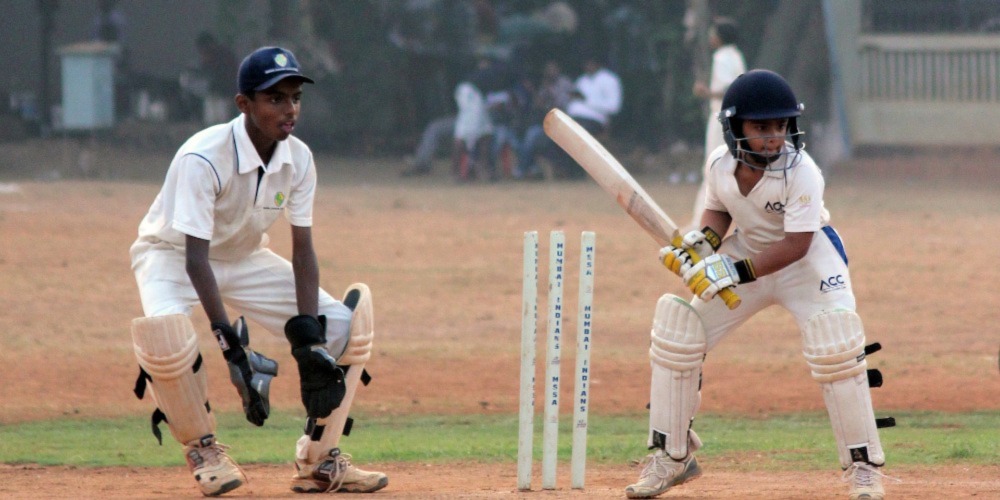Cricket is a hugely followed sport in the world, especially in the South Asian region. According to some of the statistics, it is the second most followed sport in the world. Obviously, if we talk about diversity, it is not played in many countries. The population of the countries like India and Pakistan plays a role in signifying the number of audiences.
There is a misconception that it’s the most boring sport. However, it is one of the most exciting sports when the cricket rules are understood properly. During the Cricket World Cup, 1 billion people switch to their television screens for the Pakistan-India game.
According to ESPN, Indian cricketer Virat Kohli is one of the most famous sports personalities in the world. Kohli stands eighth on the list of renowned sportsmen released by ESPN earlier. One of the premier competitions in cricket Indian Premier League almost stands in the league of elite sports leagues like the NFL, NBA, English Premier League, and La Liga in terms of viewers.
IPL is watched by millions of viewers from around the world. You can go to the best online sportsbook sites in the UK and learn about the odds in the famous sports league IPL. Now we have learned about the popularity of cricket, learning about the cricket rules is worth it. Understanding the rules of cricket is not as complicated as it seems. After reading this article, you will get a complete idea of the basic rules of cricket.
How do the Basic Cricket Rules Work?
A toss is held before the match. The team which wins the toss decides whether they want to bat or bowl first. There are 11 players on each side. Two teams compete with each other in a cricket match. Two batsmen are on the pitch for Team A. 1 bowler of Team B delivers the ball to the batsman of Team A. 1 player of Team B is the wicket-keeper. 10 players of Team B are on the field to catch or stop the ball.
Formats in Cricket
There are three types of formats in international cricket. The names of the different formats are Test, One Day, and T20 International. So do you feel confused after reading the term format in the article? Are you wondering how the rules vary according to the type of cricket game?
Don’t Worry, Here’s the Simplest Guide!
Test Cricket
In Test cricket, there are no specific amount of overs that have to be bowled in the game. A test match between the two teams runs for 5 days.

There are four innings in a Test match. Each team bats for two innings in a Test match. Team A bats first against Team B in a Test match to score a maximum amount of runs. Team B tries its best to dismiss Team A on a low score. After Team A is bowled out, Team B comes out to bat in 2nd innings.
In a similar fashion, Team A tries to get Team B out as early as possible. The same pattern is followed until the final innings arrive when Team A set the target for Team B to chase. If Team B chases the given target, it wins the Test match. However, if Team A dismisses Team B in the 4th innings, Team A wins the Test match. If the result of the match is not decided in 5 days, the match is called a drawn game.
One Day Cricket
There are two innings in a One Day International game. Each innings consists of 50 overs i.e., 300 balls. If Team A bats first in the 1st innings, it sets a total for Team B to chase. Team B tries to chase the given target in the 50 overs. The team which scores the most number of runs in the game wins the match. An ODI World Cup is played between the top teams of cricket every four years.
Click here to check out the latest cricket odds at 22bet Sportsbook
T20 Cricket
T20 cricket is the shortest format of the game in international cricket. There are two innings in a T20 international game. Each innings of a T20 game consists of 20 overs i.e, 120 balls. It’s a fast-paced game and is regarded as the most entertaining format of the game. The blistering display of sixes and fours keeps the fans on their feet during a T20 game. Meanwhile, all the leagues in cricket are played in the T20 format. One of the leagues of T20 cricket, the Indian Premier League, competes with NFL, NBA, and EPL in terms of brand value.
The Basic Cricket Rules of Scoring
The idea of hitting the ball is similar to baseball. You can get a specific amount of runs after hitting the ball. Every time, the batsmen change the sides on the pitch, a run is given to the batting side. The batsmen can keep taking runs on the pitch as long as the ball doesn’t hit the stumps.
4 runs:
When the batsman hits the ball and it crosses the boundary touching the ground, 4 runs are given to the batting side.
6 runs:
When the batsman hit the ball and it crosses the boundary without touching the ground, 6 runs are given to the batting side.
Wide Ball:
If the ball delivered by the bowler is out of the range, i.e., it can’t be touched by the batsman as it’s out of his scope, it is considered a wide ball. 1 run is awarded to the batting side on each wide ball.
No Ball:
There is a line on the pitch that the bowler can’t cross while delivering the ball. If the bowler crosses that line while delivering the ball, the ball is considered a no-ball. 1 run is awarded to the batting side.
Bye:
If the batsman takes the run without touching the ball, i.e., the batsman fails to touch the ball which was in his scope, the run is considered bye in cricket.
Leg-bye:
If the ball touches the body of a batsman without touching his bat and he takes a run, the run is considered leg-bye in cricket.
The Basic Cricket Rules of Dismissing the Batsman
In baseball, the pitcher is a player who pitches the ball. In cricket, the bowler is a player who delivers the ball. The pitcher tries to dismiss the batter in baseball.

Almost similarly, the bowler tries to dismiss the batsman in cricket. When the batsman is dismissed once, he can’t come out to bat again. A batsman can get out in the following ways in cricket:
Bowled:
If the ball delivered by the bowler hits the stumps, the batsman is dismissed. He is considered bowled by the bowler.
Caught:
If the batsman hits the ball and the fielder catches the ball without letting the ball touch the ground, the batsman is out on the caught dismissal.
LBW:
LBW stands for Leg Before Wicket. The term might sound complicated but it’s easier to understand. If the ball delivered by the bowler hits the pad of the batsman without touching the glove or bat of the batsman, the LBW comes into action.
The bowler will appeal for the batsman to be dismissed on LBW. The umpire can give the batsman out on LBW if he thinks that the ball would’ve hit the stumps presuming that the batsman was not there.

Otherwise, the umpire can give a not-out decision. There are also some other factors that take into place during the LBW decision. I would prefer you to not puzzle your mind on those factors while learning the basic cricket rules.
Run-Out:
If the batsmen make attempt to take a run and the ball hits the stumps without the batsman reaching the crease, the batsman will be considered a run-out.
Stump-Out:
Imagine a scenario where the batsman advances down the wicket to hit the ball. If he gets out of his crease in an attempt to hit the ball and fails to do it, the wicket-keeper has the chance to get the batsman out. If the wicket-keeper with the ball hits the stumps before the batsman reaches his crease back, the batsman is stumped-out in cricket.
Hit-Wicket:
If the batsman hits the stumps himself following the ball is delivered, the batsman is considered out hit-wicket.
Obstructing the Field:
A batsman is considered out if he deliberately tries to stop the fielder from hitting the stumps while taking a run.
Handling the Ball:
A batsman can be given out if he uses his hands to touch the ball without touching his bat.
Hitting the Ball Twice:
If the batsman hits the ball twice with his bat other than the scenario where he hits to save the wicket, he can be given out.
Timed-out :
A new batsman has to arrive on the crease within three minutes following the dismissal of the previous batsman. But if no batsman comes within this time interval, he is given out.
Click here to check out the latest cricket odds at 22bet Sportsbook
Overs in Cricket
You must be wondering how many times a ball is delivered to the batsman in the match? So here are the basics you need to understand.
There are six legitimate deliveries a bowler has to bowl in an over. The number of overs in a cricket match varies according to the format of the game. For instance, in one type of cricket match, 50 overs are delivered which are 300 balls. While in the other kind of cricket game, 20 overs are delivered which are 120 balls.
A bowler is allowed a specific amount of overs depending on the format of the game. In the shortest cricket game, a bowler is allowed to deliver four overs. While in the longest format of the game, a bowler can deliver as many overs as his captain intends.
For the small and easiest guide to remember, here are the rules:
There are three formats in cricket: Test, ODI, and T20I as we have discussed earlier.
ODI: A bowler can bowl a maximum of 10 overs
T20I: A bowler can bowl a maximum of 4 overs
Test: A bowler can bowl any amount of overs
Conclusion
Cricket is one of the most followed sports in the world. So you have come across this article because you had a chunk of interest in cricket in your heart. Learning the rules of cricket is way simpler than it seems. Once you have a deeper understanding of the game, you fall in love with its mechanism of the game. You can watch any format of the game according to your mood and choice. Now as you have gained some interest in cricket, why not visit the best online sportsbook sites in the UK to know which team has the highest chance of winning the next World Cup?
Click here to try the best odds at 22bet Sportsbook